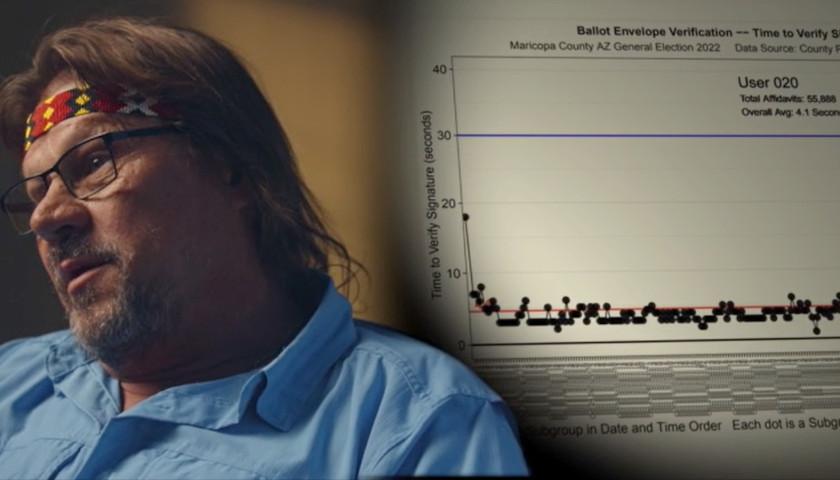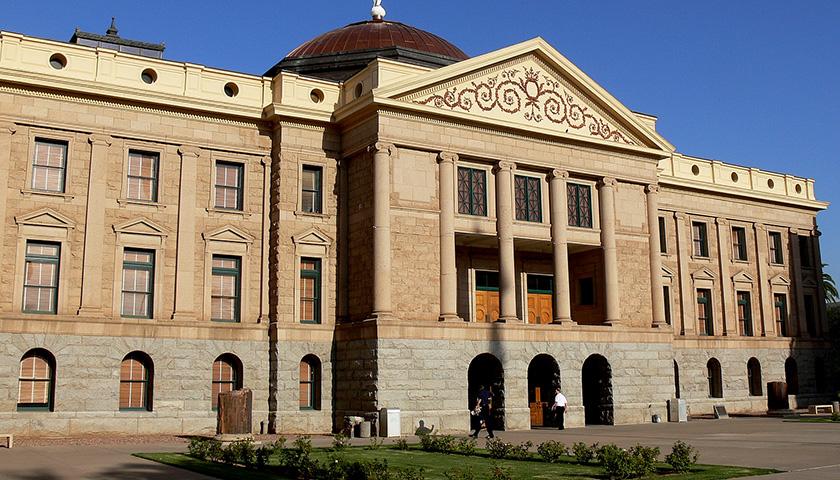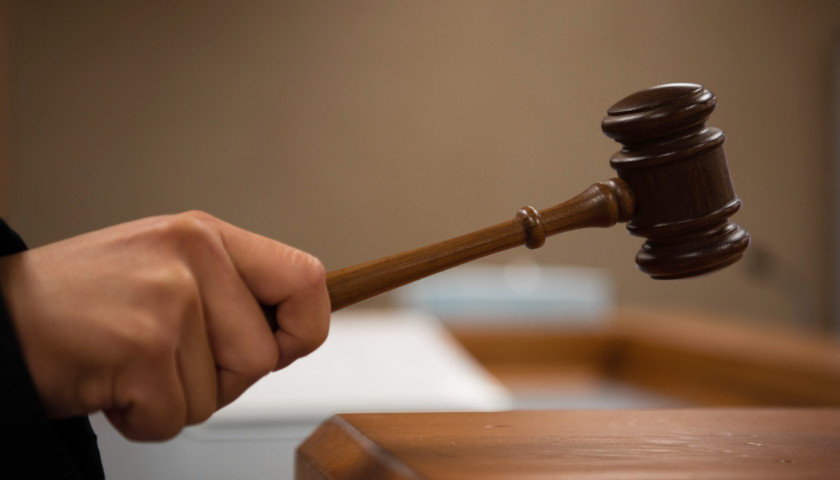A new documentary released on Wednesday, reveals the full extent of the chaos on Election Day last fall in Maricopa County due to voters unable to feed their ballots into the machines for tabulation. Speropictures released “State of Denial” in a viewing hosted by We the People AZ Alliance (WPAA) at Pollack Cinemas in Tempe, which is now available free online. The documentary interviewed the key people involved with figuring out how the problem arose, and why nothing happened in the courts to rectify it.
WPAA, which is working with the Kari Lake campaign, posted the documentary on X, along with the statement, “The movie of what the government knows, but will never admit. Kari faces defamation charges for telling the truth, while Scott Jarrett, Stephen Richer and Bill Gates continue to gaslight and lie to the public.”
The documentary juxtaposed footage of Maricopa County officials reassuring everyone that very little went wrong on Election Day, while revealing how bad the voting anomalies were. At least 61 percent of vote centers encountered tabulation problems, the documentary revealed. One video clip showed Gates, who is a Maricopa County Supervisor, stating that “door 3,” where ballots were placed that were unable to be read by the tabulating machines, was “secure.” However, cybersecurity expert Clay Parikh said during the video that door 3 containers were not sealed.
WPAA conducted an investigation into the election to get to the bottom of the illegal activities. When the group attempted to review the county’s live cameras, Chris Handsel, WPAA’s data and technology director, said they discovered, “We have so many of the cameras that went down just before we started opening up these boxes and looking at the balance.”
Lake’s attorney Bryan Blehm discussed how Lake has been unable to find almost anyone to represent her challenging the election, since Democrats are coming after election attorneys who challenge the results of the 2020 and 2022 elections. “I was the only lawyer in the state of Arizona willing to take Kari Lake’s case because I know what happened in 2022, and I know what happened in 2020,” he said.
Lake frequently says she may end up representing herself in the future, since the Arizona Bar is in the process of disciplining her attorneys.
Lake’s attorney Kurt Olsen addressed the courts dismissing the election lawsuits. “The court[s] they just say well, there’s no evidence to baseless allegations of fraud allegations,” he said. “That phrase, ‘baseless allegations of fraud,’ was repeated, regardless of the evidence that showed that there was actually illegal voting and evidence of fraud.”
Blehm said the courts sanctioned election attorneys who brought the lawsuits in order to deter others.
“I believe it was an intentional effort to get attorneys to self-censor, to avoid potential sanctions,” he said.
Blehm pointed out how progressives got the courts concerned about interference in elections, but that was back when it was likely to hurt Hillary Clinton and Democrats. “They were convinced there was Russian interference in elections, so convinced courts to create misinformation boards,” he said. Blehm has been speaking out against the Arizona Supreme Court’s creation of a misinformation task force, resulting in the State Bar of Arizona coming after him for criticizing judges.
Olsen said there were four major problems in the election, which he sued over in his complaint representing Lake. They were tabulator rejections, chain of custody violations (which is a Class 2 misdemeanor), lack of signature verification, and First Amendment violations.
The documentary revealed that of 464,926 ballot scan attempts on Election Day, over 50 percent had misfeed issues. The federal Election Assistance Commission limits misfeeds to 1 in 500 ballots. There were 180,894 ballots rejected out of 248,070, with 16,724 ballots going to door 3.
This was juxtaposed with a video clip of Gates stating, “There was no one who came today with a valid ID who was turned away from the polls.”
Many voters revealed later that they were unable to vote because they ran out of time waiting in line; many had to return to work, were elderly or sick and unable to stand in line for hours, or had other reasons.
Olsen revealed problems found with the county testing the equipment.
“They didn’t test any of the tabulators that were used in the vote centers; they tested five spares [that were not ultimately used on Election Day],” he said.
The lawyer brought this out in the pleadings in Lake’s lawsuits, but so far the courts have done nothing about it.
The county was required to conduct Logic & Accuracy tests before the election, but WPAA reported that the county didn’t actually conduct the mandatory testing until after they had certified on October 11, 2022 that it had been done, and then illegally swapped out the memory cards without testing them afterwards. WPAA discovered this after obtaining the system log files, which revealed that the L&A testing was actually done on October 14, 17 and 18, a full week after publicly certifying that it had been completed.
Olsen said over those three days, the county cut the seals from 446 tabulators, which was against the law, then reprogrammed the memory cards, which were never tested. He said the seal was supposed to be on there during the election to show they had been tested. He added that the county didn’t remember they did that until seven months afterwards when they were caught, since warning signs showed up in the log files.
Parikh said the log errors meant the votes could have been tabulated for the wrong candidate, since the machines were forced to attempt to decipher the errors. He said there was no evidence the problem was ever fixed prior to the election.
Another problem WPAA found based on the log files was that the county duplicated over 8,000 ballot images attempting to fix the tabulator problem on Election Day. However, the county only admitted duplicating 1,300 ballots, Olsen said. He said he believed setting the printers to print 19-inch ballot images was “intentional conduct to sabotage the election.”
When WPAA requested video footage, the county sent them a limited amount, which revealed nothing since the cameras were located too far away from any activity. But WPAA had been recording their own video too, and figured out that the county could have sent them that video which revealed far more, but chose not to.
Similarly, when the Lake campaign asked to inspect the ballots, which the statutes authorize a candidate to request, the county refused to turn them over.
Parikh discussed how he figured out the tabulation problem. He asked the county to allow him to look at ballots from six of the vote centers. He asked for a ruler and could see that the margins on the ballots varied, leading him to discover that some of them had been printed with 19-inch images instead of 20-inch images. The incorrect 19-inch images were found in all six vote centers.
The documentary showed footage of Jarrett, the Maricopa County Elections Department co-elections director, testifying on the witness stand during Lake’s trial about the 19-inch ballot images. During the first day he testified about it, he denied four times that it could have occurred; said the size was never tested and never installed. However, the next day he testified that he discovered the “fit-to-print” problem a few days after the election. He was not disciplined for perjury, and Shelby Busch, co-founder of WPAA, observed that the judge called him “credible.”
Busch discussed the problems the group found with voter signature verification. “Some of the things we found were voter registrations that were put into the system that had no signature, or they had signatures that belonged to another voter,” she said. Handsel added that 21 percent failed the secretary of state’s standards for signature matching, and 9 percent were “egregious mismatches.”
Olsen pointed out that 9 percent was enough to alter any election outcome.
“Nine percent of 1.9 million would be 180,000,” he said. Additionally, he cited testimony from whistleblower employees who revealed that 15 to 40 percent of signatures didn’t match, but were approved anyway by second level managers.
Handsel said WPAA submitted public records requests to the county for its signature verification procedures, and determined that following them would take as long as 45 seconds per signature. However, many of the signature reviewers were “speed clicking” through the process, many with approval rates of 100 percent of all signatures. Olsen said the court determined that over 321,000 signatures were verified in less than three seconds, asserting that it did not violate the law.
WPAA was thwarted doing its investigation, because the county refused to turn over ballot affidavit envelopes containing the signatures from the 2022 election, only the screenshots of them.
In regards to the chain of custody problems, the documentary showed Maricopa County Elections Department Co-Elections Director Rey Valenzuela stating that when the county picks up mail-in ballots from the Post Office, the county does not count them before dropping them off at their third-party vendor Runbeck Election Services, which scans in images of the ballot envelopes.
Blehm pointed out this violated the law. “They gave Runbeck the authority to count their ballots and they have no legal authority to do so,” he said. Olsen said there were around 35,000 ballots which appeared at Runbeck lacking a chain of custody. Runbeck said it received 263,000 ballots on Election Day, but recorded that they scanned in 298,000 images. Olsen and Blehm are in the process of being disciplined by the Arizona Bar for bringing up this discrepancy in pleadings for Lake.
The documentary also showed footage of Richer, the Maricopa County Recorder, testifying during Lake’s trial that when ballots leave the voting centers in the bins, they are not counted so no one knows how many there are.
The documentary cited a poll from Rasmussen Reports earlier this month which found that one in five voters admit they committed voter fraud in the 2020 election, such as by filling out a ballot for someone else. It concluded with a message from Lake, who said the U.S. needs to return to conducting elections on one day only, in person, and hand counted. She cited France’s presidential elections, which are conducted that way.
Watch the trailer.
The full film can be seen on Rumble and YouTube.
– – –
Rachel Alexander is a reporter at The Arizona Sun Times and The Star News Network. Follow Rachel on Twitter / X. Email tips to [email protected].
Photo “State of Denial Arizona Movie” by StateofDenial.






And even though we have proof of the shenanigans that created a win for the democrats, numerous judges refused to give their approval? I assume that they are all democrat judges? Else how can we explain this?